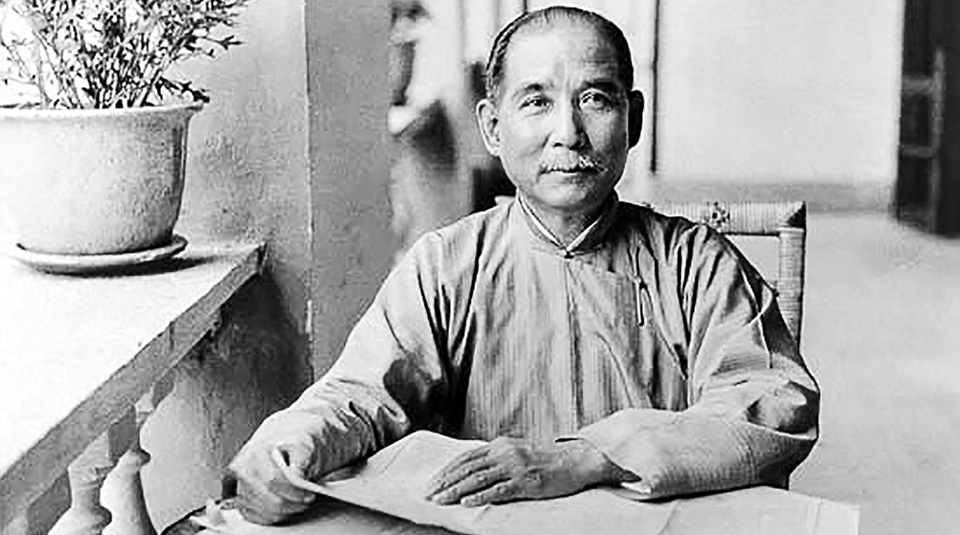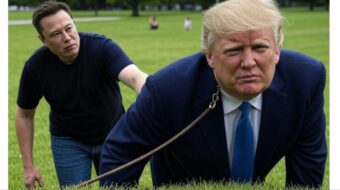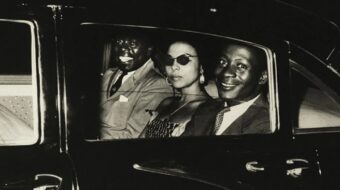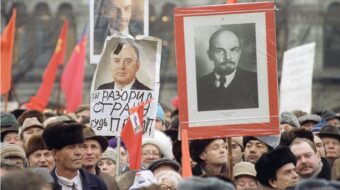
Sun Yat-sen was a Chinese revolutionary, physician, first president and founding father of the Republic of China. He was born 150 years ago on November 12, 1866, in the village of Cuiheng, Xiangshan County (now Zhongshan City), Guangdong Province.
Sun played an instrumental role in the overthrow of the Qing dynasty during the years leading up to the Double Ten Revolution on October 10, 1911. He was appointed to serve as provisional president of the ROC when it was founded in 1912. He later co-founded the Kuomintang (KMT), serving as its first leader. A uniting figure in post-Imperial China, he remains unique among 20th-century Chinese politicians for being widely revered on both sides of the Taiwan Strait.
After finishing primary education, Sun moved to Honolulu in the then Kingdom of Hawaii, where he studied at ʻIolani School. There he learned English, history, mathematics, science, and Christianity, and graduated in 1882. He then attended Oahu College (now the Punahou School) for a semester. In 1883 he returned home to China, continuing his studies in Hong Kong. In 1886 he began courses in medicine, earning the license of Christian practice as a medical doctor from the Hong Kong College of Medicine for Chinese (forerunner of The University of Hong Kong) in 1892.
Baptized by an American missionary, Sun pictured a social revolution as similar to the salvation mission of the Christian church. His conversion to Christianity was related to his revolutionary ideals and push for advancement.
During a rebellion against the Qing Dynasty in 1888, Sun met a group of revolutionaries who shared his increasing frustration by the conservative imperial government’s refusal to adopt knowledge from the technologically advanced West. Not long after earning his degree, he quit his medical practice in order to devote his time to transforming China, founding the Revive China Society to replace the dynastic system with a modern nation-state in the form of a republic.
Numerous failed rebellions against the Qing Dynasty over the course of the next two decades led to Sun’s exile in Hawaii, Canada, the UK, Malaya and Singapore. In Japan at the time of the 1898-1902 Philippine Revolution and Philippine-American War, Sun helped procure weapons salvaged from the Imperial Japanese Army for the Philippine independence movement in the hope that he could use the archipelago as a staging point of a successful revolution in China.
End of an empire
From his base abroad, Sun raised the finances for another uprising against the Qing Dynasty. On October 10, 1911, a military uprising took place at Wuchang, without Sun’s direct involvement as he was still in exile. This revolution succeeded in ending over 2000 years of imperial rule in China. When Sun learned of it from press reports, he immediately returned to China from the U.S. October 10th became known as Double Ten Day.
On December 29, 1911, a meeting in Nanjing of provincial representatives elected Sun Yat-sen as the provisional president. January 1, 1912, was set as the first day of the First Year of the Republic. The new Provisional Government of the Republic of China was created along with the Provisional Constitution of the Republic of China. The last emperor, Puyi, abdicated on February 12, 1912. Sun resigned shortly to make room for new leadership.
Sun’s chief legacy resides in his developing the political philosophy known as the Three Principles of the People: nationalism (non-ethnic and independent from imperialist domination), democracy, and the people’s livelihood (welfare, free trade and tax reform).
In 1912 a merger of small parties produced a new political party called the Kuomintang (Chinese Nationalist Party, or KMT). The 1912–13 National Assembly election was a huge success for the KMT, which won 269 of the 596 seats in the lower house and 123 of the 274 senate seats. The emperor may have been deposed, but local warlords controlled much of the nation, and China’s new government had no military forces of its own. Additionally, significant forces still had not declared against the Qing. In a far-flung land without a recognized central government, Sun advocated reunification.
In 1915 Sun wrote to the Second International, the global union of socialist parties based in Paris, asking it to send specialists to help China set up the world’s first socialist republic. At the time there were many theories and proposals of what China could be. Socialists were themselves divided, of course, splitting apart into opposing national movements during World War I.
Sun started a self-proclaimed military government in Guangzhou and was elected Grand Marshal in 1921. By the early 1920s Sun had become convinced that the only hope for a unified China lay in a military conquest from his base in the south, followed by a period of political tutelage that would eventually transition to democracy. In order to hasten his goal, he began a policy of active cooperation with the Communist Party of China (CPC), established in 1921. Sun and the Soviet Union’s Adolph Joffe signed the Sun-Joffe Manifesto in January 1923. Sun received help from the Comintern for his acceptance of communist members into his KMT. Soviet leader Vladimir Lenin praised Sun and the KMT for their ideology, principles, and attempts at social reform, and congratulated him for fighting foreign imperialism. Sun returned the compliment, calling Lenin a “great man,” and sent his congratulations on the revolution in Russia.
In 1924 Sun appointed his brother-in-law T. V. Soong to set up the Canton Central Bank. To establish national capitalism and a banking system was a major objective for the KMT. In November 1924, Sun suggested a gathering for a “national conference” of the Chinese people and called for the end of warlord rule and the abolition of all unequal treaties with the Western powers. He died of liver cancer on March 12, 1925, at the age of 58 in Beijing. A mausoleum containing his remains was built and completed in 1929 in Nanjing.
Sun Yat-sen’s legacy
After Sun’s death, a power struggle between his young protégé Chiang Kai-shek and his old revolutionary comrade Wang Jingwei split the KMT over the claim to Sun’s legacy. When the Communists and the KMT split in 1927, marking the onset of the Chinese Civil War, each group claimed to be his true heirs, a conflict that continued through World War II. Sun’s widow, Soong Ching-ling, sided with the Communists and after they won served from 1949 on as vice-president (or vice-chairwoman) of the PRC and briefly as honorary president before her death in 1981.
Sun Yat-sen remains unique among 20th-century Chinese leaders for his high reputation in both the PRC and ROC. In Taiwan, he is seen as the Father of the ROC or Father of the Nation. On the mainland, Sun is seen as a Chinese nationalist, proto-socialist, and forerunner of the Revolution. He is even mentioned by name in the preamble to the Constitution of the PRC. In recent years, the leadership of the CPC has increasingly invoked Sun, partly as a way of bolstering Chinese nationalism and economic reform, and partly to increase connections with supporters of the Kuomintang on Taiwan, which the PRC sees as allies against Taiwan independence. A massive portrait of Sun continues to appear in Tiananmen Square for May Day and National Day.
Sun Yat-sen’s image is featured on coinage and paper currency in both the ROC and PRC. He is the subject of numerous works of art – many statues around the world, particularly in Chinese communities, plaques on historic buildings associated with him, TV series and films, plays and operas. Principal streets in China are named for him as well as gardens, ships, schools and public institutions.
Adapted from Wikipedia and other sources.












Comments